|

On eBay Now...
CCC Officer\'s Cap BADGE INSIGNIA (c. 1939) SB, Gold gilt, Near Mint+++ For Sale
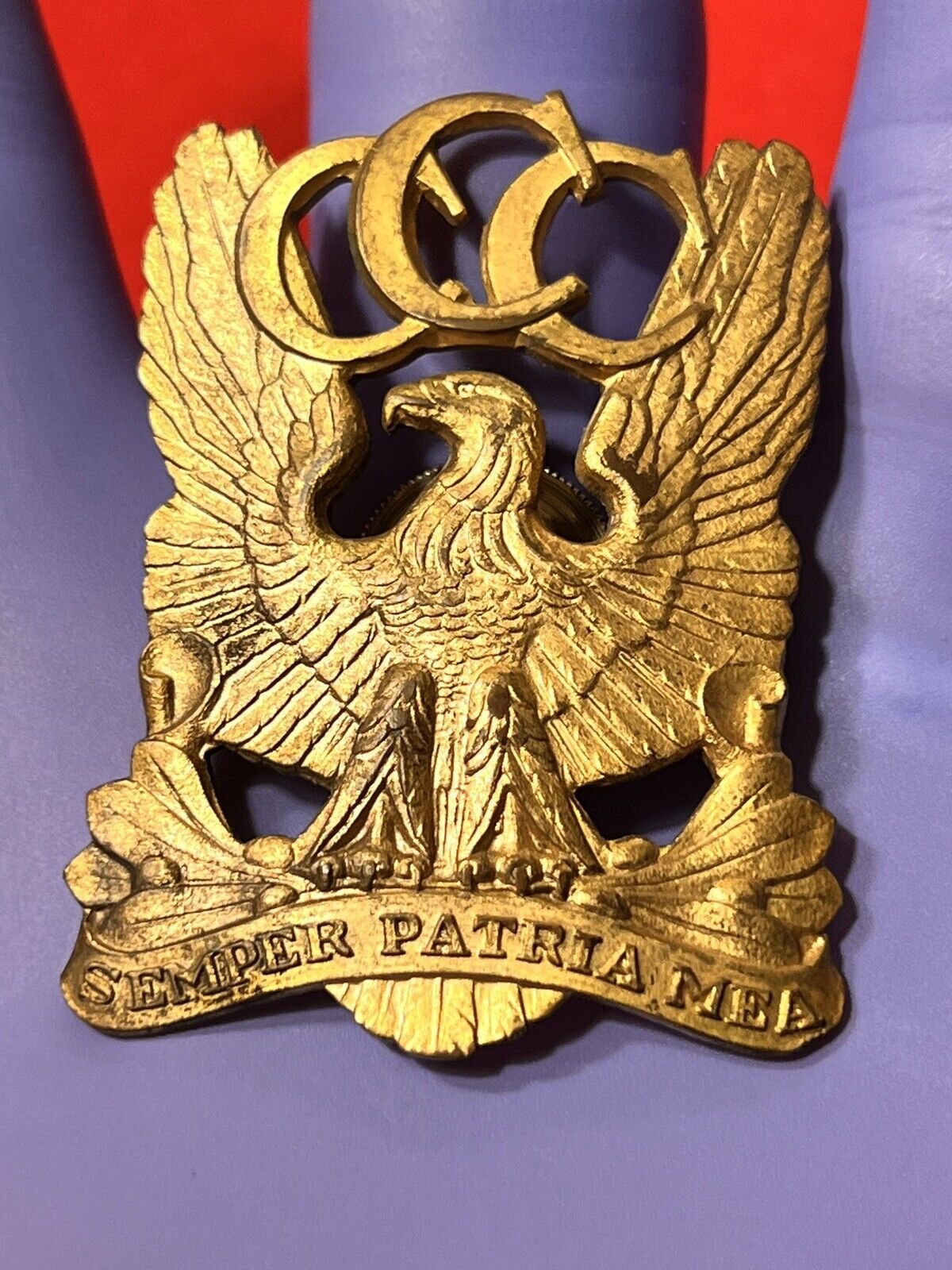
When you click on links to various merchants on this site and make a purchase, this can result in this site earning a commission. Affiliate programs and affiliations include, but are not limited to, the eBay Partner Network.

CCC Officer\'s Cap BADGE INSIGNIA (c. 1939) SB, Gold gilt, Near Mint+++:
$169.99
Pre-WWII Civilian Conservation Corps (C.C.C) Officer\'s Cap Badge/Insignia, for the Visor Cap. This Badge design was chosen by Director McEntee and executed by the Office of Heraldry of the War Department and introduced in April of 1939 when F.D.R., as a cost saving measure ordered that the Army Reserve Officers directing the Camps and the program be replaced with civilians who would have worn this insignia instead of uniforms with Army insignia (e.g. Cap Badges, Uniform Buttons, etc.) Congress votedSCARCE!! Condition!!+ Dimensions: 1-5/8\" x 2-5/8\"
+ Material: Gold gilt on \'jeweler\'s bronze.\'
+ No Hallmark. (Note: No Cap Badges were hallmarked.)
+ Screw Back.
+ \"Coin edge\" brass Spinner 5/8\" in diameter
+ With two stabilizing prongs.
National Eagle with upright wings; In his talons the Eagle is grasping two Laurel Branches; Surmounting the Eagle are the three overlapping \'C\'s; Scroll at the bottom, in raised letters, reads \'Always My Country\' in Latin:
SEMPER PATRIA MEA
*****Forest Army: Remembering the Civilian Conservation Corps: Stories from the C.C.C.
Tuesday, April 6, 2010Semper Patria Mea: A New Look for Camp CommandersWe now know when the insignia worn by the camp staff was changed. But why?Larger developments and policies that shaped the program between 1933 and 1942 are widely known or at least vaguely understood but often the little facts behind the implementation of the policy are seemingly lost to history – buried deep in a stack of boxes in the National Archives perhaps.Folks who’ve made a study of the CCC will have noticed that at some point in the lifespan of the program, the officers who ran the camps switched uniforms and their insignia changed from the familiar insignia of the U.S. military to an insignia created specially for the CCC. Bob Audretsch has located an article that spells out this change in the April 13, 1940 issue of Happy Day.Washington, D.C. – CCC camp officials are to get a new corps insignia to replace the regulation one now used on CCC uniform hats. Devised by the war Department on request of Director James J. McEntee, the insignia will resemble the drawing above. Specifications now are being drawn by the Army Quartermaster.
The design, somewhat similar to that of the Army, will be of jewelry bronze, 2 ½ inches high, with raised letters. The Latin quotation at the bottom, “Semper Patria Mea,” means “Always My Country.” It was chosen by Director McEntee. The design was executed by the heraldry office of the War Department.The reason for the switch lies buried in a bureaucratic maneuver that took place in 1939. The War Department was never 100% on board with participation in the CCC program; they were a reluctant partner at first and eventually grew into a grudging participant, having recognized a number of benefits that could be derived from their participation in the CCC program. Nevertheless the relationship between CCC Director Fechner and the War Department was never a close one and by 1939 the War Department was taking steps to have itself absolved of responsibility for the camps.A move by Congress in April 1939 only served to push the divorce along. On April 3rd Congress voted to give full disability benefits to Reserve officers assigned to active duty with the CCC; this was an expense the Roosevelt administration could not sanction and in response he decided to replace all Reserve officers assigned to CCC camps with civilians and the changeover was complete by the end of 1939. Nevertheless, the War Department remained in control of the camp administration, but the change in policy explains why the insignia of camp personnel was undergoing the changes that are outlined in the short piece from the April 13, 1940 issue of Happy Days. (I’ve drawn on John Salmond’s book The Civilian Conservation Corps: 1933-1942 for background on the change in policy.)
*****The Civilian Conservation CorpsAs part of the New Deal Program, to help lift the United States out of the Great Depression, Franklin D. Roosevelt established the Civilian Conservation Corps in 1933. The CCC or C’s as it was sometimes known, allowed single men between the ages of 18 and 25 to enlist in work programs to improve America’s public lands, forests, and parks. For many, just the prospect of three meals and a bed were enough to get young men to enroll. As jobs and income were incredibly scarce, the CCC for a lot of these young men was their first job. Enlistees would make $30 a month, $25 of which would be sent straight to their families, while the other five was for the worker to keep. Meals and lodging were provided in military camp fashion. Education opportunities were an added bonus of joining the C’s. In fact, many completed their high school education while serving. Leadership advancement positions with an increase in pay were also offered to hard-workers. ***** Should Civilian Conservation Corps Camps Train for War? The Civilian Conservation Corps camps: From tree soldiers to real soldiers. August 6, 2018
Background: Have you ever hikedor camped in a national park?Ever been to Yellowstone or the Grand Canyon?Next time you do, you need to stop and think about the Civilian Conservation Corps. Good chance they laid the hiking trails, made the campsites, and the roads going into our national parks. When Franklin Roosevelt was elected president of the United States in 1932, he introduced the New Deal as his plan to help America recover from the Great Depression. One of the key pieces of legislation in the New Deal was the Emergency Conservation Work Act (EWC), more commonly known as the Civilian Conservation Corps (CCC). Before the CCC came to an end, as a result of World War II, it proved to be one of the more successful New Deal programs. The CCC proved to be beneficial on several levels. It provided work for young men who had been unemployed for years. It restored our depleted forests and implemented the prevention of soil erosion. It also gave young men the chance to leave their homes for the first time and experience the great outdoors. The income they earned was sent home and provided families with money they previously did not have. The young men learned to read, type, how to drive trucks and carpentry skills. More importantly, it gave the young men a sense of purpose and they experienced the satisfaction which is gained from hard work. Young men age 18 – 25 unemployed and unmarried joined the CCC for a six-month enlistment. They could extend that enlistment for up to two years. Each worker received $30 a month in payment, a dollar a day, and he was required to send home $22 to $25 each month. He received three meals a day, clothing, room and board and medical care. Many of the young men had never eaten like this before; they had fresh eggs, vegetables, and fruit. In addition to the financial and health benefits, they had the opportunity to expand on their education. Over 40,000 men were taught to read and write while enrolling in educational programs held in the evening after work hours. The CCC was a model of success. On March 9, 1933, President Roosevelt addressed the 73rd Congress to obtain authorization for the program. Only a month later, the induction of the first men into the program came on April 7, 1933. The initial call-up was for 250,000 men. By July of 1933, there were over 300,000 men in the CCC. 1935 was the height of the program with over 500,000 men serving in over 2,500 camps operating in all states. California had over 150 camps; there were also camps in Hawaii, Alaska, Puerto Rico and the Virgin Islands. If you add the support staff, supervisors, education instructors and administrators, the total was more than 600,000 employed by the CCC. Women were not allowed to join the CCC. African Americans did join the CCC. They lived and worked in separate camps. There were over 88,000 Native Americans in the CCC. World War I Veterans were given preference over job locations and job responsibilities. Before the program came to an end over three million Americans served in the CCC. It is estimated roughly five percent of the total male population took part in the CCC during its nine years. The accomplishments of the CCC were very impressive. Over 2.5 billion trees planted, over 800 State and Federal Parks constructed, 3,500 fire towers erected, 125,000 miles of roads built and over 50,000 acres of campgrounds developed. Farmlands benefited from erosion control and re-vegetation of land lost during the dust bowl of the late 1920s and early 1930s. These farmlands were reclaimed. There are monuments, statues, and plaques dedicated to the CCC throughout the United States. The next time you walk through City Park notice the references and tributes paid to the CCC. ------ The Civilian Conservation Corps from the beginning was highly influenced by the United States Army. The initial obstacle faced by the CCC was transporting hundreds of thousands of men to their new work sites. Most of the men lived in the east and a great majority of the camps were in the west. Only the Army had the ability and the infrastructure to transport that large a number of people. The camps were spread throughout the United States and the territories, and were constructed, supplied, and maintained by the U.S. Army. The camps were not military camps; however, they were run much like a military camp. You rose early in the morning, answered role, participated in exercise drills and had breakfast. You then received your assignment for the day. The older men were the leaders. You were expected to listen to and respect their orders. You always kept your bunk made and your area in the barracks clean. World War II brought an end to the CCC. The country needed all of its resources for the war effort and there was no longer funding for the CCC. The three million men, who served in the CCC, easily transitioned into military life. They were disciplined, trained in team work, and use to hard work. They were ready to join American forces in the fight against tyranny.


CCC Officer's Cap BADGE INSIGNIA (c. 1939) SB, Gold gilt, Near Mint+++ $169.99
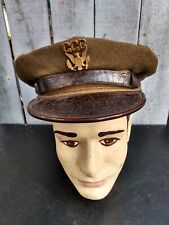
Rare Pre WW2 CCC Civilian Conservation Corps Officers Visor Hat $295.00
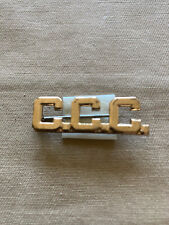
1930's / WW2 CCC Civilian Conservation Corps Officer collar insignia pinback $29.95

1930s WW2 CCC Officer's Collar - Civilian Conservation Corps - PB 3L $45.00
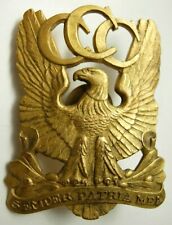
1930's / WW2 CCC Officer Large Hat Badge - Civilian Conservation Corps - SB $385.00

Vtg US Military CCC Officers Match Pistol 1958 Medal Coin $42.47
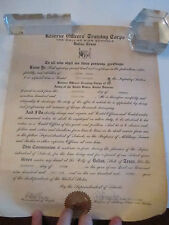
(2) 1935 RESERVE OFFICERS TRAINING CORP CERTIFICATES - TUB CCC $50.00

5200mAh Portable Camping Fan for Tent with LED Light USB Rechargeable Outdoor $27.99
|